Many sampling methods are available when it comes to statistical surveys and obtaining the necessary data. Simple sampling, systematic sampling, quota sampling, cluster sampling — various ways to construct…
continue reading“Employment of surveyors is projected to grow 11% from 2016 to 2026, faster than the average for all occupations.” (Source: Bureau of Labor Statistics)
“Gen. Y accounts for 68% of all first time home buyers.” (Source: Contactually)
“35.4% of homeowners are under 35 years of age. The age bracket with the highest rate of homeownership (78.5%) is 65 years and over” (Source: US Census Bureau)

40+ Sample Real Estate Property Surveys
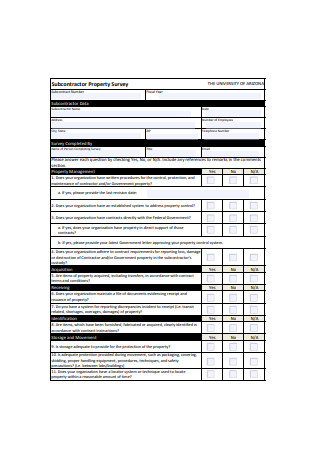
Subcontractor Property Survey
download now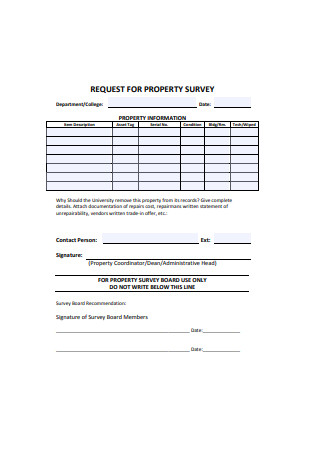
Request for Property Survey
download now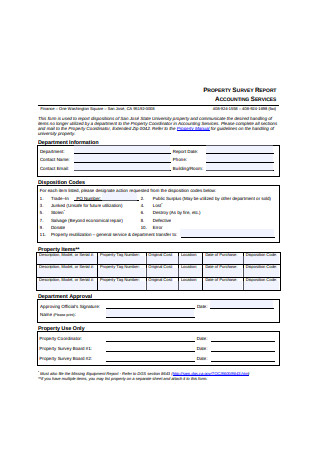
Property Survey Report
download now
Property Survey and Tagging Sample
download now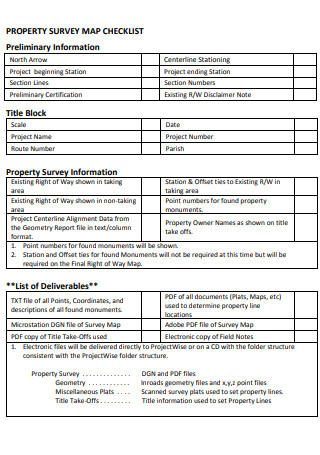
Property Survey Map Checklist
download now
Sample Property Survey
download now
Property Survey Request
download now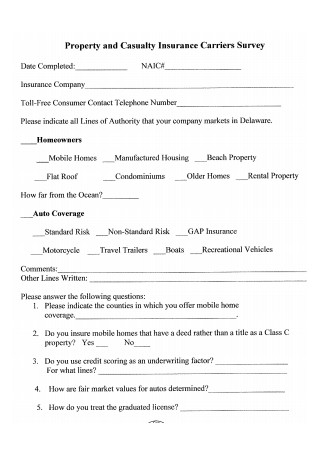
Property and Casualty Insurance Carriers Survey
download now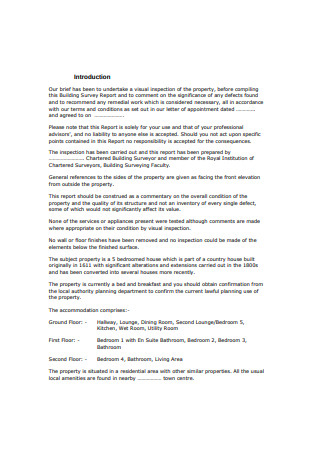
Building Property Survey
download now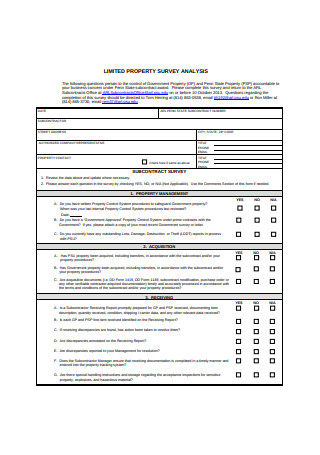
Limited Property Survey Analysis
download now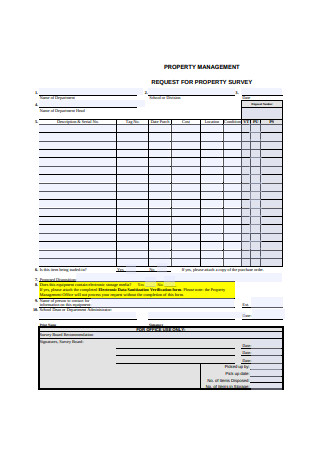
Property Management Request for Property Survey
download now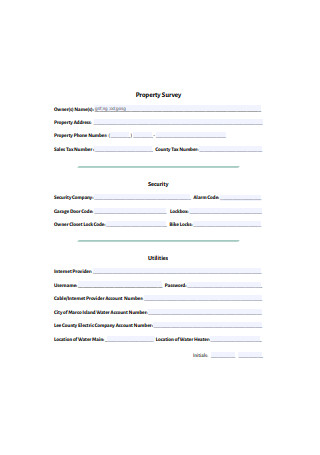
Property Survey Format
download now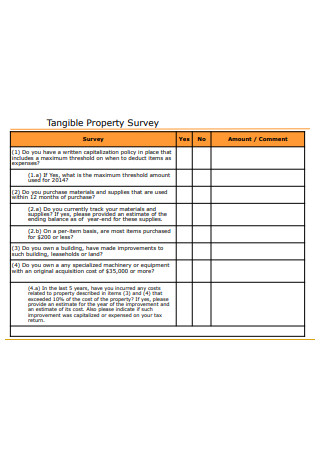
Tangible Property Survey
download now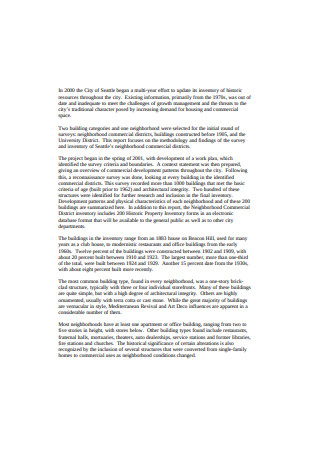
Historic Property Survey Report
download now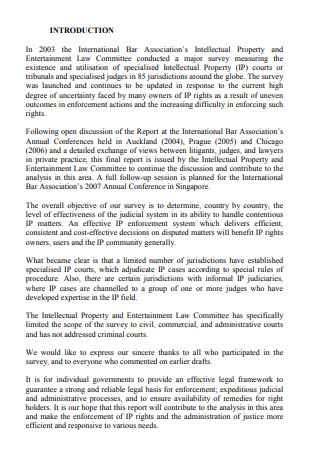
International Survey of Specialised Intellectual Property
download now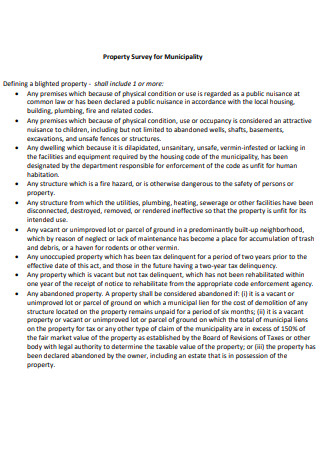
Property Survey for Municipality
download now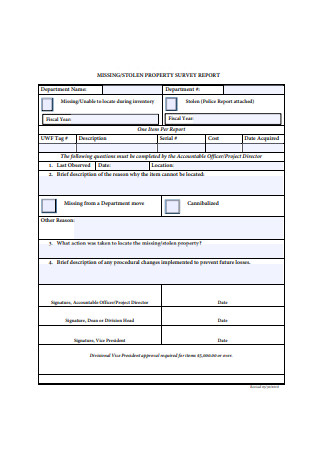
Stolen Property Survey Report
download now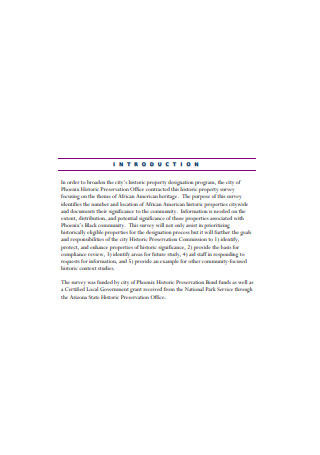
Historic Property Survey
download now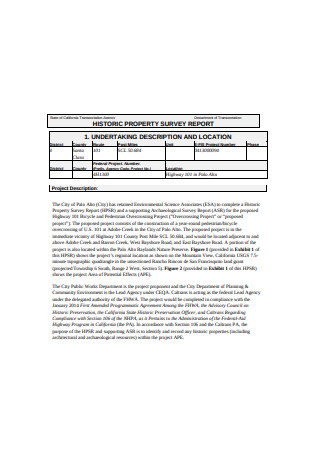
Historic Property Survey Report Example
download now
Internal Wall Insulation Property Survey Form
download now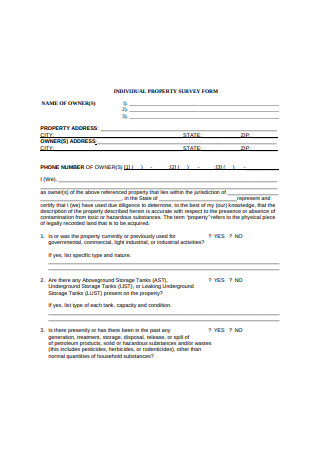
Individual Property Survey Form
download now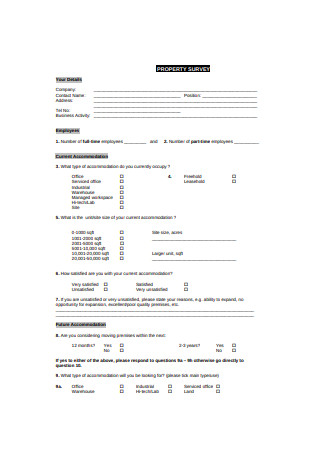
Property Survey Example
download now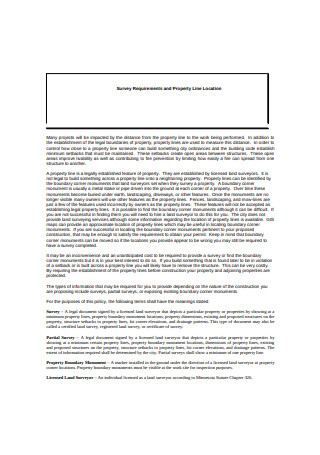
Survey Requirements and Property Line Location
download now
Minimum Standards for Property Survey
download now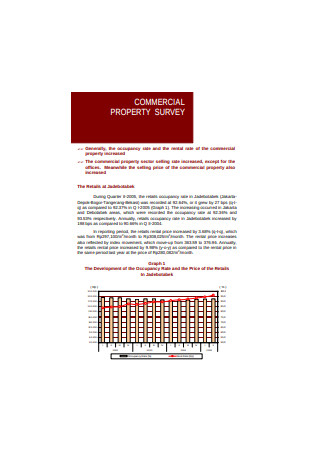
Commercial Property Survey
download now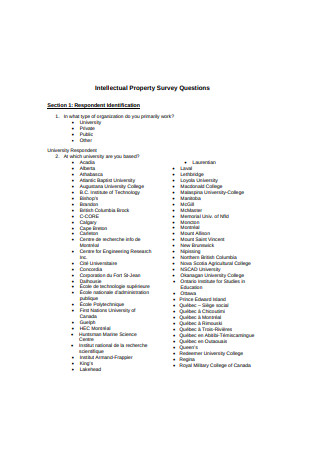
Intellectual Property Survey Questions
download now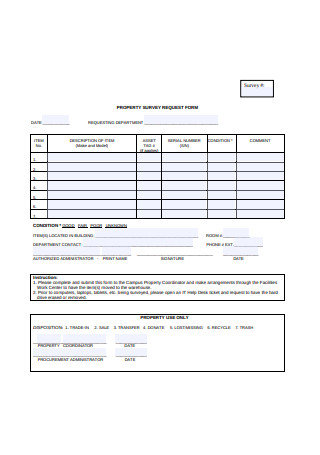
Property Survey Request Form
download now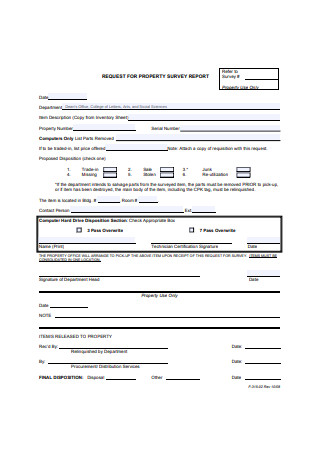
Request for Property Survey Report
download now
Property Survey Report Example
download now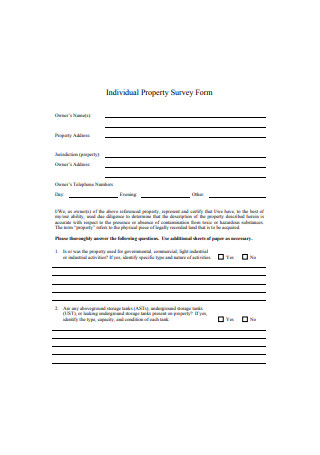
Sample Individual Property Survey Form
download now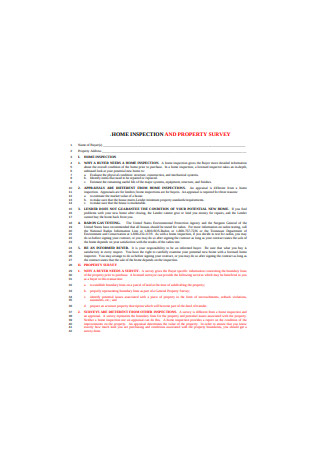
Home Inspection and Property Survey
download now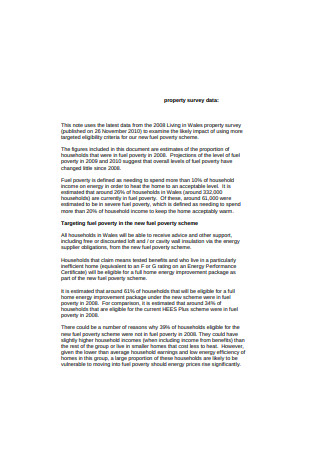
Property Survey Data
download now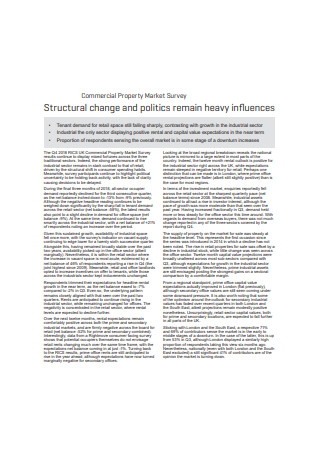
Commercial Property Market Survey
download now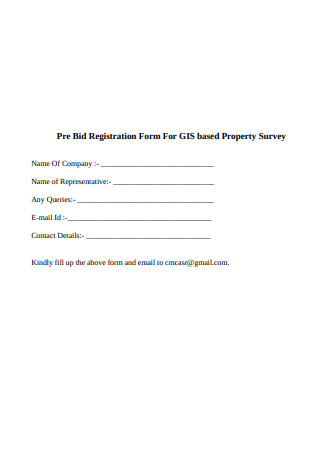
Pre Bid Registration Form for Property Survey
download now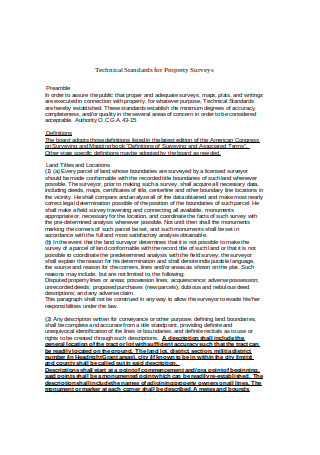
Technical Standards for Property Survey
download now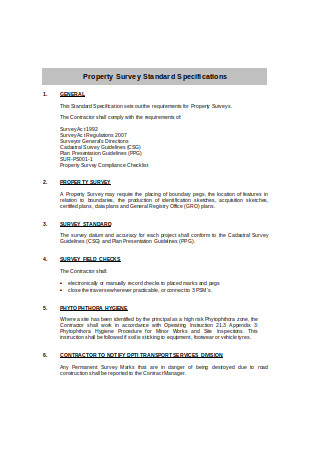
Property Survey Standard Specifications
download now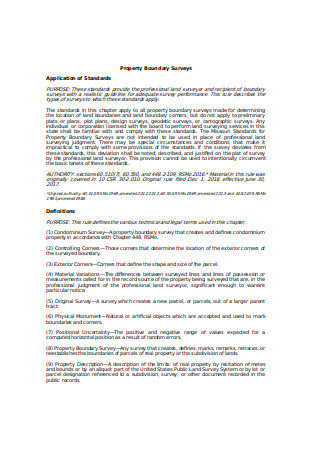
Property Boundary Survey
download now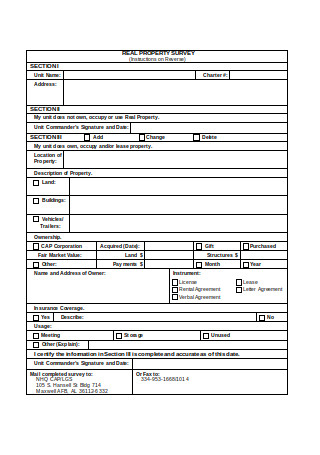
Real Property Survey
download now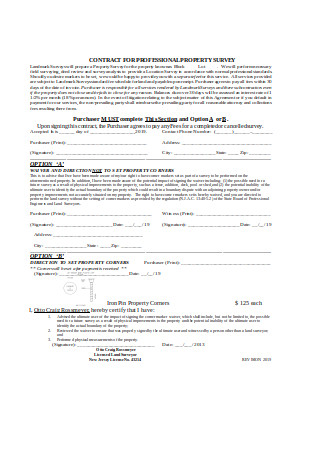
Contract for Professional Property Survey
download now
Empty Property Survey
download now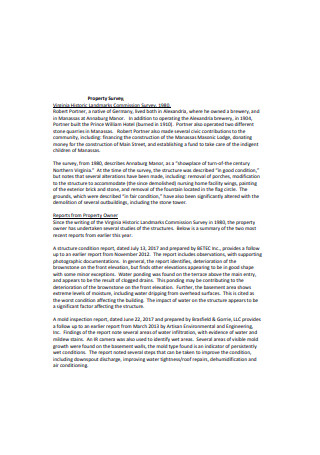
Simple Property Survey
download now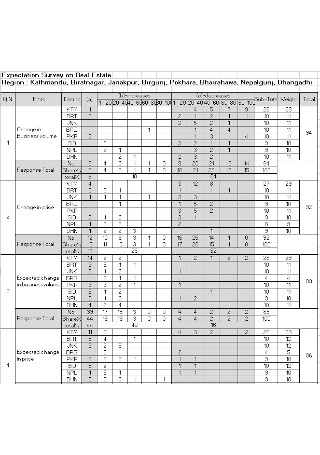
Real Estate Expectation Survey Template
download now
What Is a Real Estate Property Survey?
Although it is something that property owners can have done at any time they want, a real estate property survey is an act done by a surveyor, typically when a prospective owner is either looking for a home or seeks to construct something. It involves legal research, mapping and reporting, and field surveying. By completing one’s due diligence concerning property surveys, expensive mistakes can be easily avoided. Also, note that this is a survey that can benefit professional real estate marketing efforts.
Types of Real Estate Property Survey
The different types of real estate property surveys will depend on the needs and the circumstances of those who plan on conducting it. For those who are not so familiar with the varieties, take a look at the list below and see how they differ from one another. You never know when your marketed property might be eyed by potential customers, so it pays to be prepared.
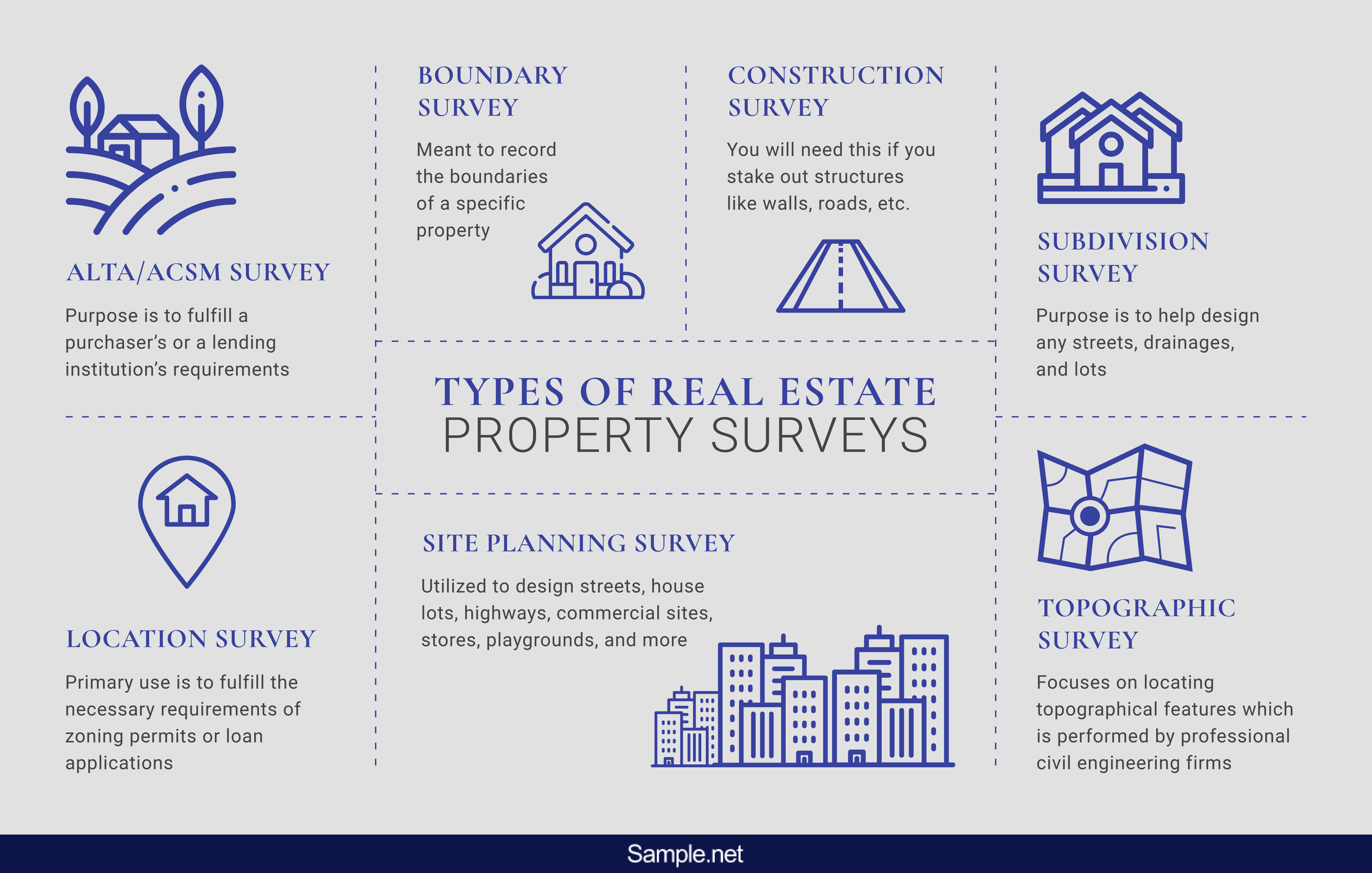
How to Conduct a Real Estate Property Survey
With the definition of what a real estate property survey is and by specifying the types that a person can go within certain circumstances, now we will look into how the survey is actually conducted. The following steps will save you the trouble of performing any trial and error attempts and are unlikely to be found in any real estate brochures you might find. These generalized steps are guaranteed to make things easier and faster for you.
Step 1: Determine the Specific Reasons for the Survey
The primary purpose of many property surveys being conducted would be the prevention of property line disputes. However, you may have additional reasons for conducting a survey. For your first step, you need to determine on your own as to what these additional reasons are. This will help in deciding on what type of surveys will be needed going forward, along with any steps to be taken that are specific to the survey you need.
Step 2: Decide on What to Do Yourself and When to Hire Professionals
Understand that even existing boundaries are not necessarily 100% accurate. This is especially true for those properties located in rural areas. With that said, it is worth determining if surveying the property on your own is something you are capable of or if you need to hire a professional. There can even be instances where you can do part of it by yourself but leave some of the more complicated matters to the ones with actual knowledge and experience. A task was is as difficult and time-consuming as this needs to be deliberated as much as possible. It should be noted that amateur surveys are unusable in court as part of any bank-required information for a property sale.
Step 3: Acquire the Documents of the Property
For you to be able to determine the locations of the property’s legal boundaries, at least one legal document that describes the land is going to be needed. As a matter of fact, the deed ought to have a section that is referred to as a ‘legal description,’ containing the information you need. You can also make good use of a plat — basically the surveyor’s map of the property. If you cannot acquire the plat for your property, then it is recommended that you find ones for the adjacent properties so that you can identify shared boundaries.
Step 4: Gather the Right Tools
The majority of surveyors are known to utilize both a compass and a long tape measure for the task at hand. It is recommended that you do the same. You also need to make sure that the documents needed and any useful maps are also brought along. For the method of marking property markers, you can settle for any posts or brightly-colored flags. Basically, anything that you can bring along with ease and that can help make a location stand out.
Step 5: Locate and Then Start at a Known Corner
Regardless of what specific real estate property survey variation you need, you can always count on the fact that it will all begin by coming up with a starting point. The legal descriptions of the property’s deed usually specify starting points where you can begin measuring from. It can be anything; a particular tree, a rock feature, or even very specific directions like ’40 feet southwest of the road.” Should you have trouble locating a known corner, both USGS topography maps and Google maps are free to use. Once you have located a known corner, grab your supplies and begin the survey
Step 6: Make Good Use of a Compass to Find Other Corners
Start at the known corner and then proceed to find the others using the compass. Plant the tape measure first and then start walking. Be sure that you maintain the compass heading as you go. It often helps you to identify a landmark in the direction that you are headed towards so that you can know as to whether or not you remain on the right course. In measuring distance, be aware that it is not in relation to the land’s topography; it is in a horizontal distance only and not over any hills or other kinds of obstruction.
Step 7: Mark the Found Corners and Then Repeat
When the moment comes that you think the next corner has been successfully discovered, look for its corresponding marker. If you are having trouble doing so, a tip would be to look underground. In that case, a metal detector can be used to locate it in the event that the marker is meant to be a metal rod. The compass you’ve brought with you can also be used as a metal detector by holding it close to the ground where you think the metal marker ought to be. Older markers may be something else entirely: glass shards, wooden stakes, etched rocks, or anything else. You may do this again for all the other corners that you find from here on out until the task is finished.
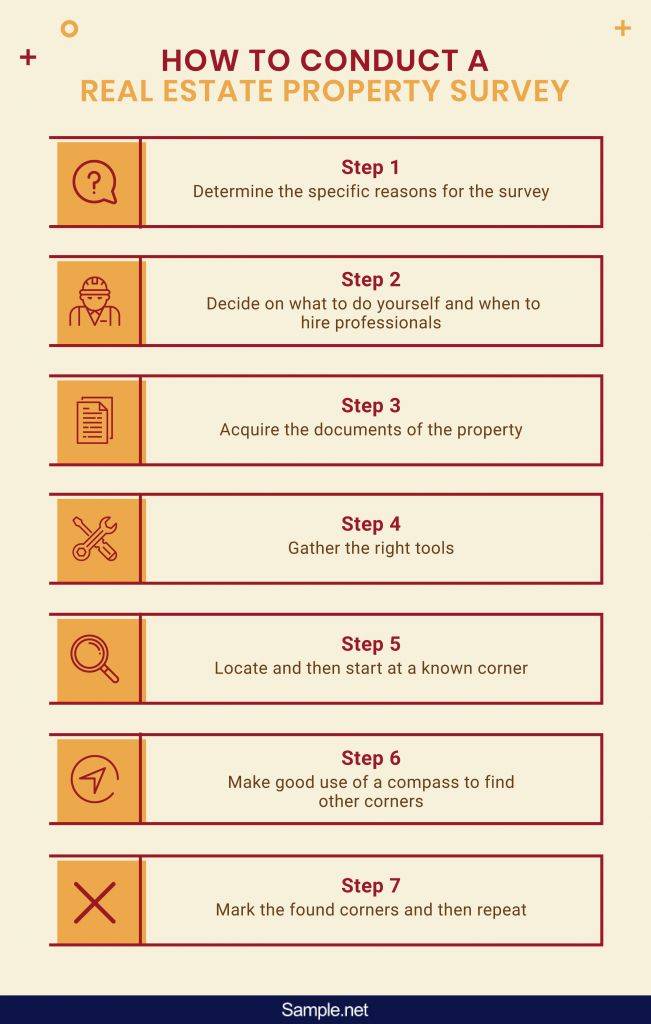
The Do’s and Don’ts of a Real Estate Property Survey
Even with the proper instructions already detailed above, there can still be ways for you to be able to improve upon the manner in which real estate property surveys are conducted. There are multiple do’s and don’ts that anyone can implement to not only make the task easier and more successful but also to avoid any pitfalls that may delay or even derail your progress. So with that said, look into the following list and see for yourself what tips await you:
The Do’s
Do your best to keep things simple.
As you go about the task at hand, there is one thing that must always be kept in mind and that would be to keep things simple for your own benefit. Disengage yourself from anything that is not immediately related to the property survey nor anything that does not add any value to the task in any way. Use only the equipment that you deem necessary and keep your expenses low as much as you can.
Do test out your equipment.
Speaking of equipment, you need to ensure that what you intend to use is working properly. Compasses that are malfunctioning will not help you in terms of accuracy. The online tools as well need to be working well and you must also make sure that you know how to use it properly. Perhaps testing things out before the actual surveying is done can help assure you of its capabilities. Look into all the other materials and equipment as well as test them out before you can even consider using them on this task.
Do prepare to fix the minor issues.
If there is anything that you find amiss in the property you are surveying, then it would be wise to take note of them. Once everything is done, you are most likely to return to those issues and fix them in order to increase the property’s value. By noting them done early on, you give yourself ample time to prepare for whatever it is that you may need later on in terms of the equipment needed, the time it will take to do any corrective measures, and whether or not you will need help from others.
Do take note of what you cannot solve yourself.
It takes a lot to admit when the task has got you beat. Unless you have professional experience, it is ultimately wiser for you to turn to those with greater skill and qualifications for those issues that you simply cannot solve. The choice of doing so might cost you more but it will be worth it in the long run simply because professionals will be able to find solutions and implement them better than you can, leaving little doubt that the issues once deemed unsolvable by your hand is more or less taken care of.
Do stick to your goals.
If you had specific goals in mind before starting the survey, then it is best to stick to them as much as possible. There are a few good reasons why you should do so. One, it would be to avoid getting distracted by any other issues that you may encounter. Two, although it is necessary for you to confront everything at a later date, sticking to your primary goals over everything else can keep you better organized. In turn, staying organized will help you with your overall efficiency and is going to ensure that you are progressing in the way that you like.
The Don’ts
Don’t go overboard with your budget.
Due to the numerous complications that one can potentially run into with real estate property surveys, it is understandable — and even expected — to prepare for a lot of expenses. However, you do not need to go above and beyond your initial budget. Plan things out as much as you can beforehand so that the necessary expenses can be anticipated and accounted for with greater accuracy. As important as property surveying can be, it should not be a reason for you to lose a small fortune.
Don’t rush yourself or the process.
There will be times when you start looking forward to getting things over and done with as soon as you possibly can. However, doing things as fast as you can just so that you can wrap it up may lead towards avoidable mistakes that can end up costing you dearly in the long run. Instead, it is recommended to take as much time as you can to make sure everything is done right. Double-check your work and go over everything to make sure that nothing is out of place and any mistakes made can still be corrected before it is too late.
Don’t make any rash decisions.
It is highly recommended to always try to keep a cool head during the survey, even when things do not go the way you may have wanted or expected it to go. With that said, any rash decisions made during heated moments may just come back to bite you at a later date. Take some time to cool off and carefully consider any decisions that come your way. If possible, even take the time to consult professionals or anybody else with greater skills, experience, and qualifications. Be sure to ask a lot of questions even before conducting the survey so you have enough knowledge to rely on when making decisions later on.
Don’t operate on your own as much as possible.
Even if you decide to do the survey yourself, it always helps to have another person around to help you here and there. This is also useful in the event that you run into potential trouble. It is preferable to either work with a professional or have the means to contact one easily in case of an emergency. First-time surveyors can end up making several mistakes that would normally be avoidable for more experienced surveyors, so taking a buddy with you who knows what he or she is doing is definitely for the best.
In the end, there is clearly a lot of benefits to be reaped from the use of real estate property surveys. Due to the financial and emotional drain that comes with finding the best properties for whatever needs you may have, it is always better to come prepared. In the event that you want to conduct your own survey, resources are available to you in the form of top-notch real estate survey templates. Each one is not only guaranteed to be of professional quality, but they are also editable and print-ready for the convenience of its users.


